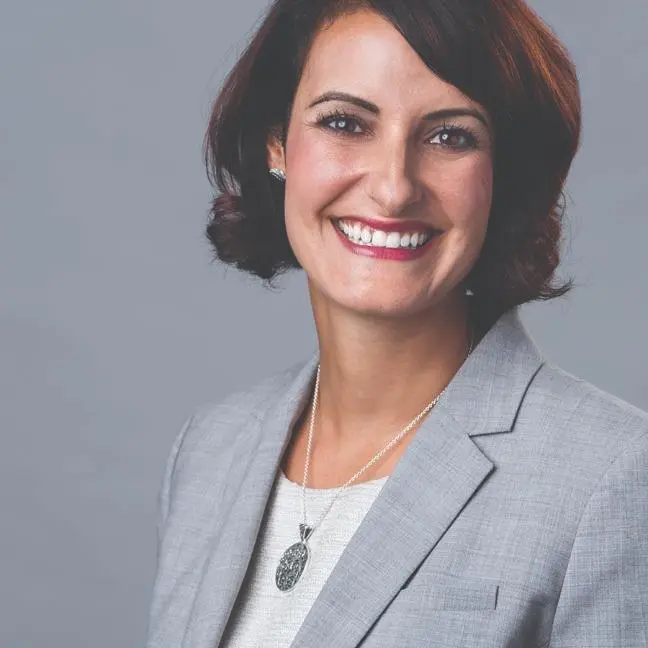Planning for the World: Q&A With Sandra Anderson, SVP of International Commercialization at Cencora
By AmerisourceBergen

Anderson discusses the complexities of planning for a global launch and the common mistakes companies make that cause problems along the way.

This article was originally published on PharmExec.com on February 21, 2024.
In her role at Cencora, Sandra Anderson leads a team of sellers and consultants to help customers launch product in multiple countries and advises them on optimal strategies. The SVP of international commercialization spoke with Pharmaceutical Executive about the journeys companies take bringing a product to market on a global scale.
Sandra AndersonSVP of International Commercialization
Cencora

Pharmaceutical Executive: For emerging bio pharma companies looking to bring a product to market, what are some of the key questions that they need to address in the development and pre-launch stage?
Sandra Anderson: Basically, we work with smaller companies that might not have solid infrastructure and experience. A lot of them are small, new, and launching their first product, so there’s no one-size-fits all approach. Each company’s go-to-market strategy is really different based on the drug and the target population. Usually, there are several key questions that the companies must answer during the planning phase. An example would be how many markets do they want to launch in? If it’s a rare disease company, they need to understand where their target population is. Also, they must think about if they’re going to set up a commercial infrastructure.
These are very important choices that must be made during the planning stage. If they don’t think about these things early on, later it becomes a delay. There’s a lot of different things that they must ask in the pre-launch phase. There are customers that make these decisions who are determining which country or market it makes sense to launch in first and where they should prioritize their resources and investments.
PE: What are some of the common pitfalls?
Anderson: They must think ahead, be proactive, and think about a global launch sequencing strategy. If they don’t, and they only do it piece meal or tactically, they can fall behind. For example, if they’re investing and launching in multiple countries, there are things they can do once and then localize and tweak after.
For example, a pricing strategy requires them to consider how they can get their optimal price. There are some markets where they can get this optimal price, which can then act as a reference price. They must think about investing in one pharmacovigilance strategy as opposed to multiple. If they know they’re going to go to multiple markets, they should probably invest once and then localize it.
It's understanding the interdependencies of the planning process. Also, the complexities to coordinate the steps. For the timing of the regulatory filings, there are timelines they must follow. For example, in some markets, if they notify a regulatory authority, they must file six months later. If they miss those targets, they’re going to fall behind.
Our team spends a lot of time simplifying the planning process by outlining key decisions points, timelines, partners, collaborations, and what they should be taking in house. We developed a tool called the commercialization blueprint called the commercialization blueprint that can map out scenarios of different launch sequences and planning. We can customize their launch plans using this.
If you don’t have this type of planning up front, you can miss timelines and create a sense of urgency. Whereas, if you have it, it can accelerate your timeline and coordinate your launch plan and stay on budget.
PE: How often do you see companies not developing these plans early enough in the process?
Anderson: I see that a lot. I see many customers who come to us to ask for one-off things, but they haven’t thought of the implications for how it links to another step in the process. I’ve had companies that missed steps but think they have the correct documentation and not realize that they don’t until later. We usually do a checklist with them because an entire launch can be delayed by a missed requirement.
It is really important to have that checklist and a plan ahead of time, but unfortunately, we see it happen where companies don’t and get delayed.
PE: For companies looking to enter a new market, what questions should they prioritize when developing their strategy?
Anderson: We have a number of questions that we ask our customers. The majority of companies that we’re talking to are usually in the US and want to go to Canada and Europe in the future. One of the things that we advise is that you can’t use a strategy to go to market in the US and assume that it’s going to work in Canada or Europe. You must understand the local market and the differences.
For example, there are 28 countries in Europe and they’re not all coordinated or have the same regulatory or compliance. You do need to help the customer navigate the complexity and global regulations, processes, and timelines. We ask them how they’re going to price their product, how are they going to enter the market, do they have the appropriate licenses set up in each market, do they need an importer of record or a manufacturing importing license? We ask if they’re going to set up their company in the country, or will they continue to operate from the US.
There’s also the regulatory timeline and process, which can really differ. The requirements differ. You can’t take a submission from the US and just put it into the UK or Europe. You do need to customize it.
Sandra Anderson: Basically, we work with smaller companies that might not have solid infrastructure and experience. A lot of them are small, new, and launching their first product, so there’s no one-size-fits all approach. Each company’s go-to-market strategy is really different based on the drug and the target population. Usually, there are several key questions that the companies must answer during the planning phase. An example would be how many markets do they want to launch in? If it’s a rare disease company, they need to understand where their target population is. Also, they must think about if they’re going to set up a commercial infrastructure.
These are very important choices that must be made during the planning stage. If they don’t think about these things early on, later it becomes a delay. There’s a lot of different things that they must ask in the pre-launch phase. There are customers that make these decisions who are determining which country or market it makes sense to launch in first and where they should prioritize their resources and investments.
PE: What are some of the common pitfalls?
Anderson: They must think ahead, be proactive, and think about a global launch sequencing strategy. If they don’t, and they only do it piece meal or tactically, they can fall behind. For example, if they’re investing and launching in multiple countries, there are things they can do once and then localize and tweak after.
For example, a pricing strategy requires them to consider how they can get their optimal price. There are some markets where they can get this optimal price, which can then act as a reference price. They must think about investing in one pharmacovigilance strategy as opposed to multiple. If they know they’re going to go to multiple markets, they should probably invest once and then localize it.
It's understanding the interdependencies of the planning process. Also, the complexities to coordinate the steps. For the timing of the regulatory filings, there are timelines they must follow. For example, in some markets, if they notify a regulatory authority, they must file six months later. If they miss those targets, they’re going to fall behind.
Our team spends a lot of time simplifying the planning process by outlining key decisions points, timelines, partners, collaborations, and what they should be taking in house. We developed a tool called the commercialization blueprint called the commercialization blueprint that can map out scenarios of different launch sequences and planning. We can customize their launch plans using this.
If you don’t have this type of planning up front, you can miss timelines and create a sense of urgency. Whereas, if you have it, it can accelerate your timeline and coordinate your launch plan and stay on budget.
PE: How often do you see companies not developing these plans early enough in the process?
Anderson: I see that a lot. I see many customers who come to us to ask for one-off things, but they haven’t thought of the implications for how it links to another step in the process. I’ve had companies that missed steps but think they have the correct documentation and not realize that they don’t until later. We usually do a checklist with them because an entire launch can be delayed by a missed requirement.
It is really important to have that checklist and a plan ahead of time, but unfortunately, we see it happen where companies don’t and get delayed.
PE: For companies looking to enter a new market, what questions should they prioritize when developing their strategy?
Anderson: We have a number of questions that we ask our customers. The majority of companies that we’re talking to are usually in the US and want to go to Canada and Europe in the future. One of the things that we advise is that you can’t use a strategy to go to market in the US and assume that it’s going to work in Canada or Europe. You must understand the local market and the differences.
For example, there are 28 countries in Europe and they’re not all coordinated or have the same regulatory or compliance. You do need to help the customer navigate the complexity and global regulations, processes, and timelines. We ask them how they’re going to price their product, how are they going to enter the market, do they have the appropriate licenses set up in each market, do they need an importer of record or a manufacturing importing license? We ask if they’re going to set up their company in the country, or will they continue to operate from the US.
There’s also the regulatory timeline and process, which can really differ. The requirements differ. You can’t take a submission from the US and just put it into the UK or Europe. You do need to customize it.
Topics:
Commercialization
Consulting
Market access



.jpg?h=320&iar=0&w=540&useCustomFunctions=1¢erCrop=1&hash=DDA1D7BEE906940394C769FA6454A08B)

